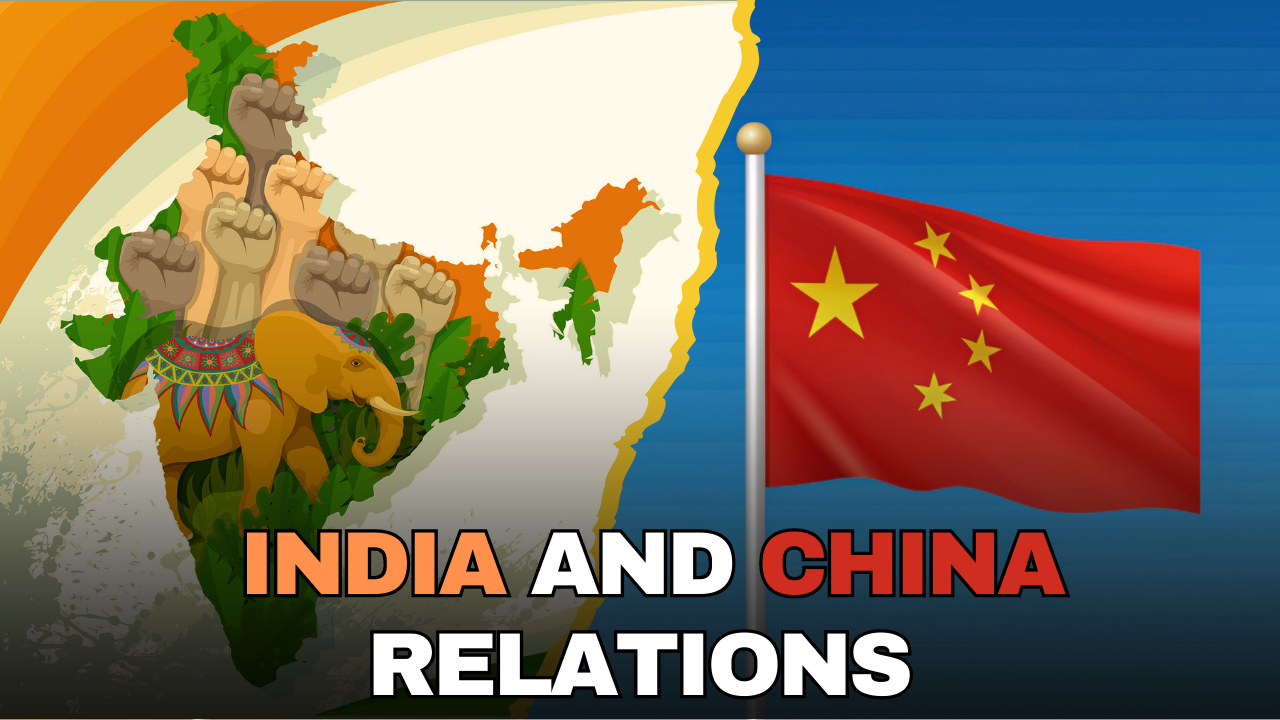Understanding Deception in India and China Relations: A Strategic Game
Introduction – India and China Relations.
Deception is like a game of chess, where strategic moves are made to mislead an opponent and gain the upper hand. In the complex relationship between India and China, deception plays a pivotal role, influencing military confrontations, political negotiations, and economic strategies. China’s tactics, inspired by ancient philosophies and modern advancements, often catch its rivals off guard. By understanding these tactics and adopting clever strategies, India can navigate this challenging relationship effectively.
What is Deception in Strategy?
Deception involves misleading others by providing false or partial information. It aims to confuse, delay, or misdirect opponents, giving the deceiver a strategic advantage. This concept has been used for centuries in military campaigns and diplomacy. Sun Tzu, the ancient Chinese philosopher, wrote that “all warfare is based on deception.” His teachings remain relevant, particularly in China’s modern strategies.
For India and China, deception goes beyond the battlefield. It influences decisions about trade, diplomacy, and technology. For example, during World War II, Allied forces used deception to mislead German forces about the location of the D-Day landings. Similarly, China uses deception to distract India and gain strategic benefits.
China’s Strategic Culture of Deception
China’s strategic culture is deeply rooted in historical philosophies, particularly Sun Tzu’s Art of War, which emphasises patience, secrecy, and misleading the enemy. These principles are not relics of the past but actively shape China’s modern geopolitical strategies. By integrating deception into its actions, China seeks to maintain a competitive edge while keeping adversaries uncertain about its true intentions.
One prominent element of China’s strategy is the use of grey-zone tactics. These actions fall short of outright war but still exert pressure on adversaries. Examples include cyberattacks targeting infrastructure and economic measures that undermine rivals without triggering large-scale retaliation. Such tactics exploit vulnerabilities in a way that is difficult to counter without escalating tensions.
China also manipulates boundaries to assert territorial claims. By redrawing maps and renaming towns in disputed regions, such as Arunachal Pradesh, Beijing reinforces its claims. For instance, it has published official maps showing parts of Indian territory as Chinese, creating confusion and sowing mistrust in diplomatic discussions about territorial disputes.
Hiding its intentions is another cornerstone of China’s approach. The 2020 Ladakh standoff highlights China’s use of deception to gain strategic advantages. Under the guise of routine military exercises, China amassed troops near the Line of Actual Control (LAC), catching India off guard. This approach combined tactics such as distortion—confusing border alignments, denial—refusing to disclose casualties, and diversion—exploiting India’s COVID-19 lockdown. By masking its true intentions, China escalated tensions while avoiding immediate counteractions. This incident demonstrates how China effectively blends military, political, and psychological strategies to achieve its objectives. The use of ambiguity and misdirection allowed China to surprise India, creating a significant challenge for Indian policymakers and military planners.
Besides deftly masking intentions, Information warfare is a key component of China’s deception toolkit. By spreading misinformation, such as denying casualties in border clashes, China shapes narratives to its advantage. Controlling the flow of information allows Beijing to project an image of strength while obscuring the reality of its actions, complicating the response of its adversaries.
Together, these tactics reflect China’s deliberate use of deception as a tool to consolidate its power and maintain dominance in geopolitical arenas. Its strategies leverage ambiguity, misinformation, and subtle aggression, ensuring that opponents are kept on edge, unable to predict or effectively counter its moves.
The ICAD Strategy: A Modern Twist
Academics have coined the term ICAD—“Illegal, Coercive, Aggressive, and Deceptive”—to describe China’s behaviour in global politics. This strategy blends territorial expansion, economic pressure, and misinformation to achieve its objectives while destabilising its rivals. For instance, China has constructed hydroelectric projects on the Yarlung-Tsangpo River (Brahmaputra), raising concerns for downstream nations like India and Bangladesh. Additionally, it has established administrative counties in disputed areas, such as Ladakh, asserting control over contested territories. Another example is its cartographic aggression, where China renames locations in regions it claims, further complicating boundary discussions. ICAD illustrates China’s calculated efforts to dominate Asia, using ambiguity and assertive actions to undermine opponents and maintain a strategic upper hand without resorting to direct conflict.
Why Deception Works
Deception is effective because it takes advantage of uncertainty and the natural human tendency to trust visible patterns. For a country like India, which prioritises transparency, this poses unique challenges. Deception allows the deceiver to confuse opponents by sending mixed signals that delay decision-making. It also enables achieving strategic goals without the need for costly battles, conserving resources. Furthermore, uncertainty created by deception can lower morale and instil fear, giving the deceiver a psychological advantage. China’s skilful use of deception grants it a powerful edge, compelling India to stay vigilant and constantly adapt its strategies. This strategic mastery places India in a defensive position, making it essential to develop innovative approaches to counteract China’s deceptive tactics.
India’s Response to Chinese Deception
India is taking proactive steps to counter Chinese deception through a combination of national and military strategies. At the national level, understanding China’s culture and strategic history is a key focus, as it helps predict Beijing’s moves. Strengthening critical infrastructure, particularly in cybersecurity, ensures sensitive information is safeguarded against cyberattacks. Public awareness campaigns educate citizens about misinformation, reducing its potential impact.
Building strong alliances with nations like the United States is another important strategy. These partnerships enhance India’s ability to counteract China’s tactics by leveraging shared resources and expertise. Collaboration in areas such as defence, technology, and intelligence provides India with a broader framework to address challenges posed by Chinese strategies, particularly in contested regions.
On the military front, India is adopting innovative operational strategies to surprise China and disrupt its plans. Securing military networks and communication systems is vital to preventing espionage and safeguarding national security. Additionally, training military leaders to make balanced decisions under pressure ensures that India can respond effectively to deceptive tactics, even in high-stakes situations.
India is also preparing for conflicts in unconventional domains such as cyber and space. By focusing on multi-domain preparedness, India is strengthening its capacity to handle complex and evolving threats. Together, these strategies not only bolster India’s defences but also enable it to take a more proactive role in countering and neutralising Chinese deception when necessary.
The Role of Technology in Deception
Technology has amplified the power of deception. Advanced tools like artificial intelligence (AI) and cyber capabilities make it easier to mislead opponents. For example:
- AI in Misinformation: AI can create fake videos or news that confuse people and influence public opinion.
- Cyber Warfare: Cyberattacks on power grids or defence systems disrupt normal functioning and create chaos.
India is investing in technology to stay ahead, focusing on AI, space surveillance, and indigenous systems. This ensures greater control over its strategies and reduces reliance on potentially compromised foreign technology.
Diplomatic Efforts and Challenges
Diplomacy is another battlefield for deception. Recent talks between India and China highlight the challenges of negotiating with a deceptive partner. In December 2024, India’s National Security Advisor Ajit Doval and China’s Foreign Minister Wang Yi met to discuss the border issue. While China promised cooperation, its actions on the ground, like expanding infrastructure in disputed areas, tell a different story.
India’s aim of creating a “multipolar Asia” clashes with China’s ambition to dominate the region. This ideological difference means that diplomatic efforts often struggle to bring lasting solutions.
Ethical Considerations
While deception can be effective, it raises important ethical concerns. Overreliance on deceptive tactics risks damaging a nation’s reputation and undermining trust among allies, which are crucial for long-term partnerships. For India, maintaining a balance is vital. Deception should be employed strategically, only when necessary to safeguard national interests, while preserving its image as a responsible and trustworthy global player. This approach ensures that India can navigate challenges effectively without compromising its values or alienating its allies on the world stage.
Conclusion
Deception is a double-edged sword that offers opportunities but can also breed mistrust. In the India-China relationship, understanding and countering deception is essential for ensuring security and stability. India can protect itself by studying China’s strategies, strengthening its defences, and encouraging innovation. By turning deception to its advantage, India can maintain a strategic edge. The key lesson is clear: much like in chess, staying alert, anticipating moves, and being prepared are crucial for overcoming challenges—whether in international relations or everyday situations, where strategy and awareness often determine success.
Subscribe to our Youtube Channel for more Valuable Content – TheStudyias
Download the App to Subscribe to our Courses – Thestudyias
The Source’s Authority and Ownership of the Article is Claimed By THE STUDY IAS BY MANIKANT SINGH




